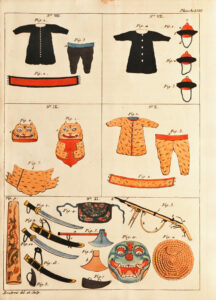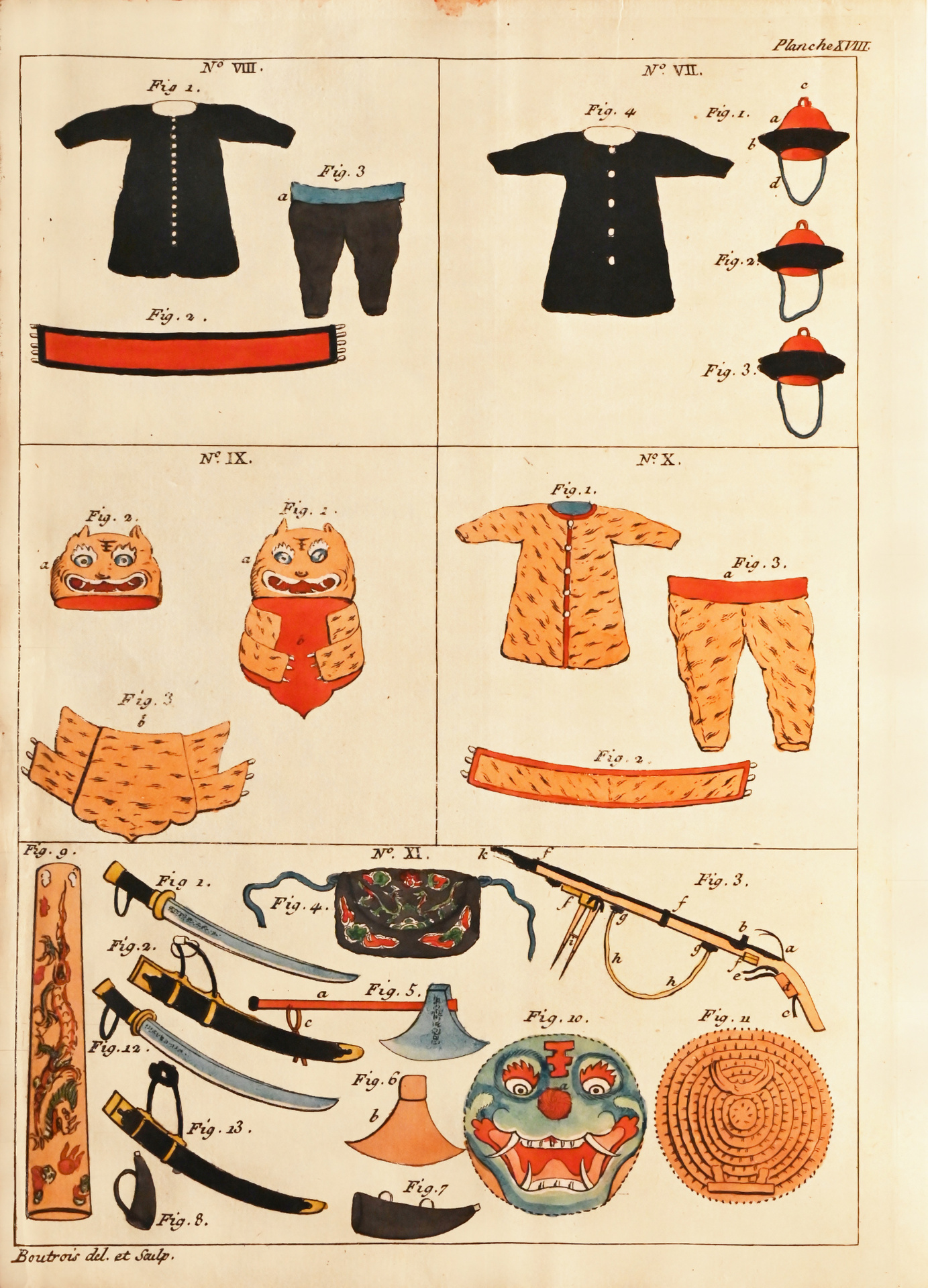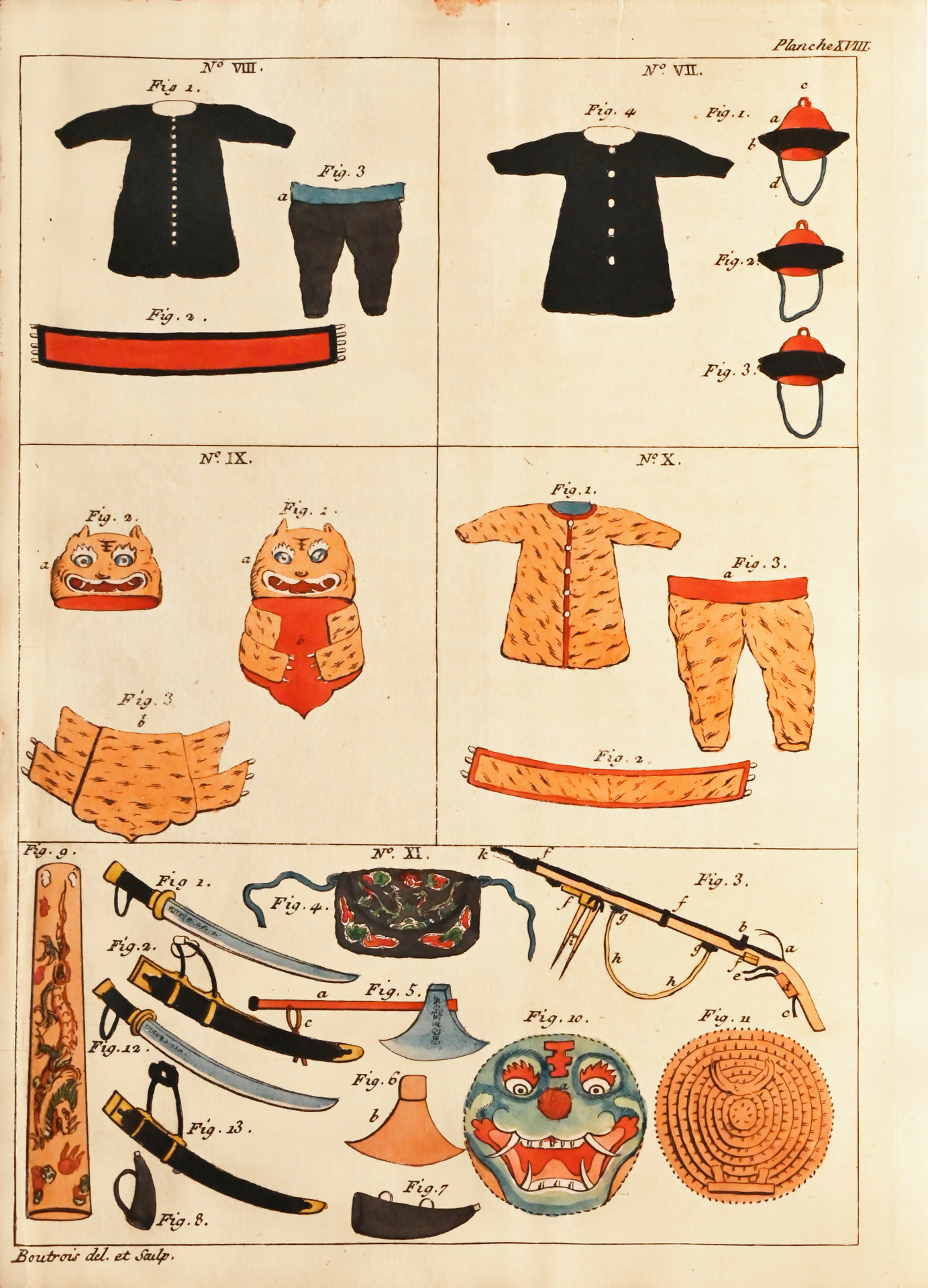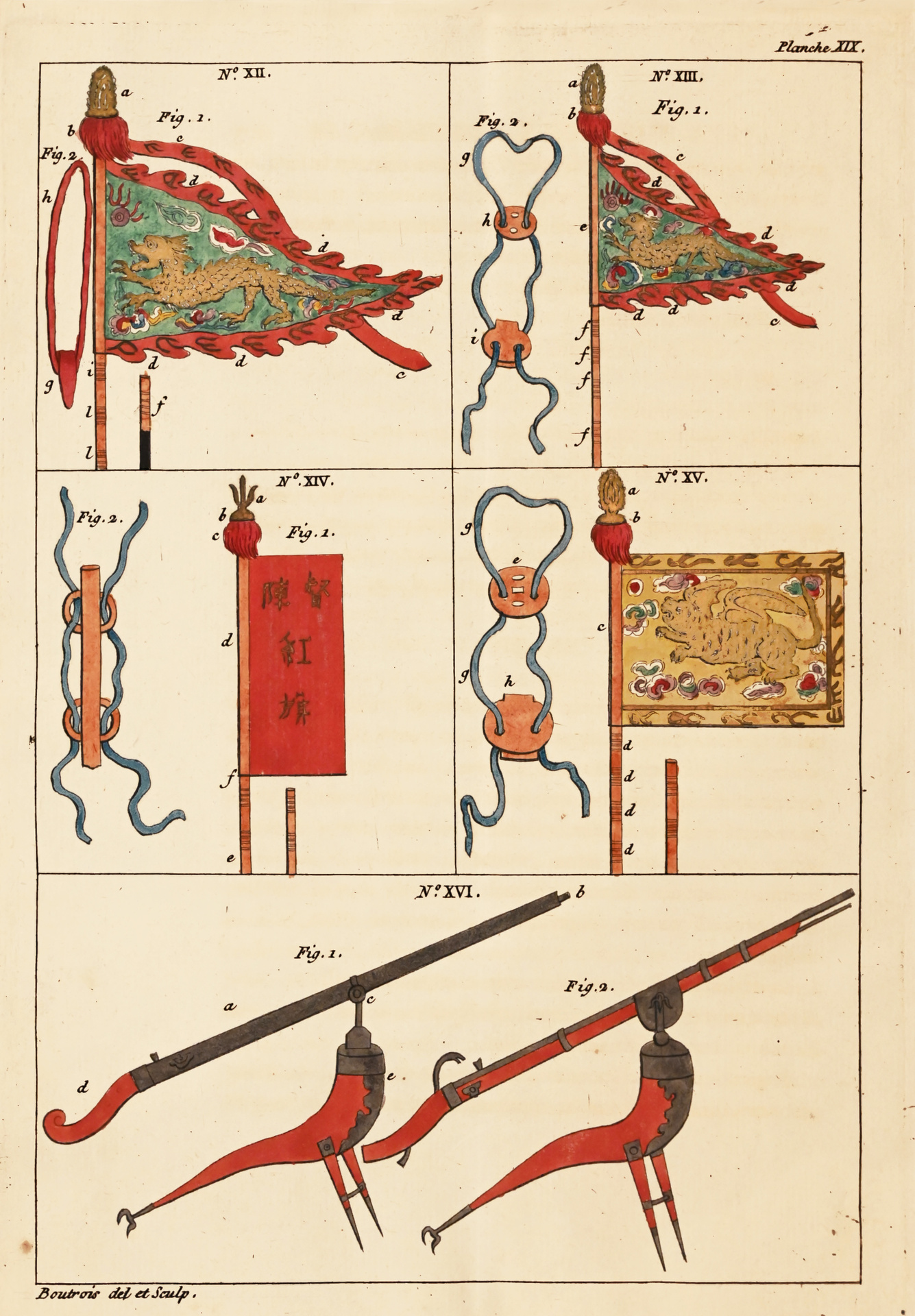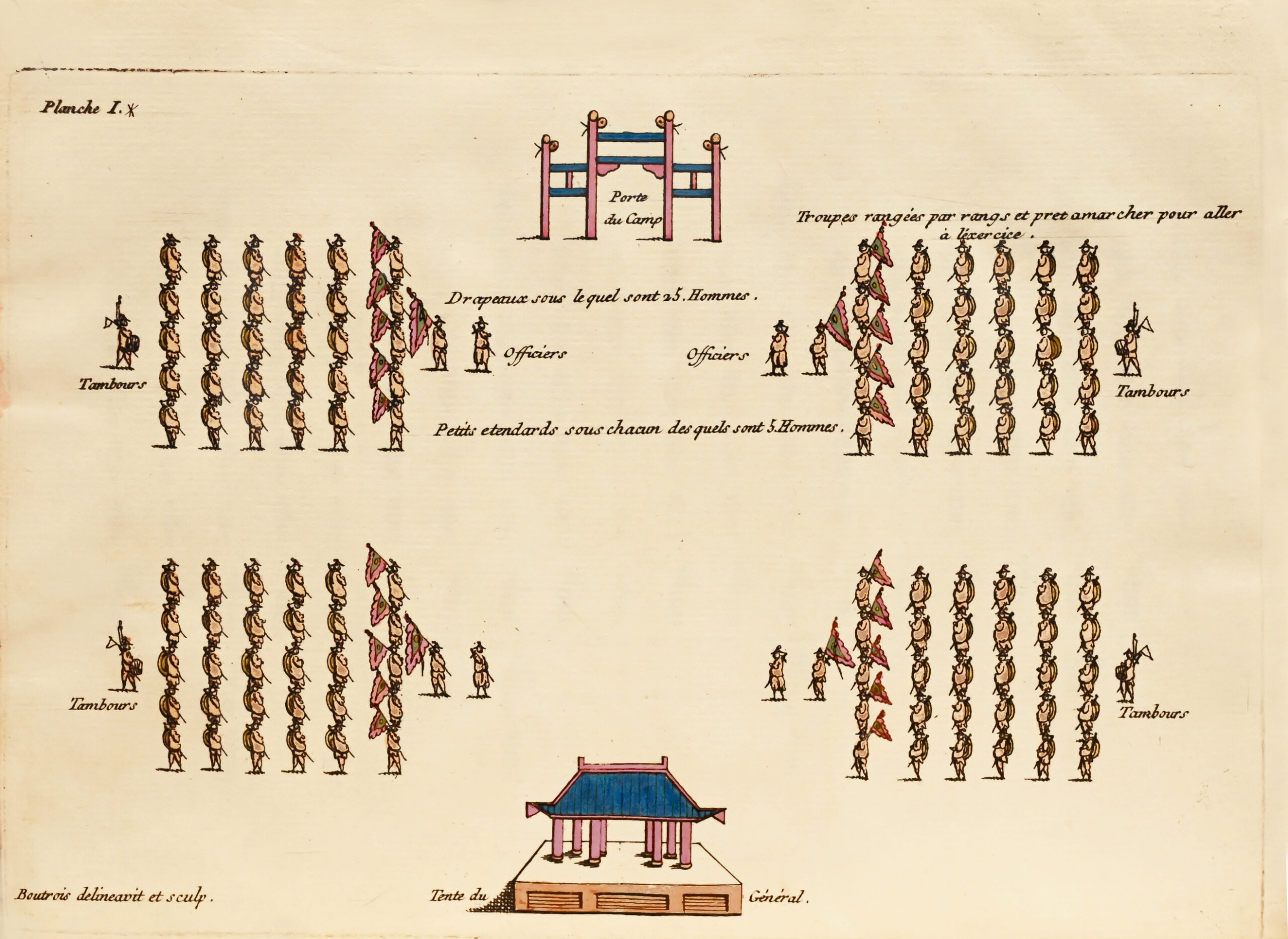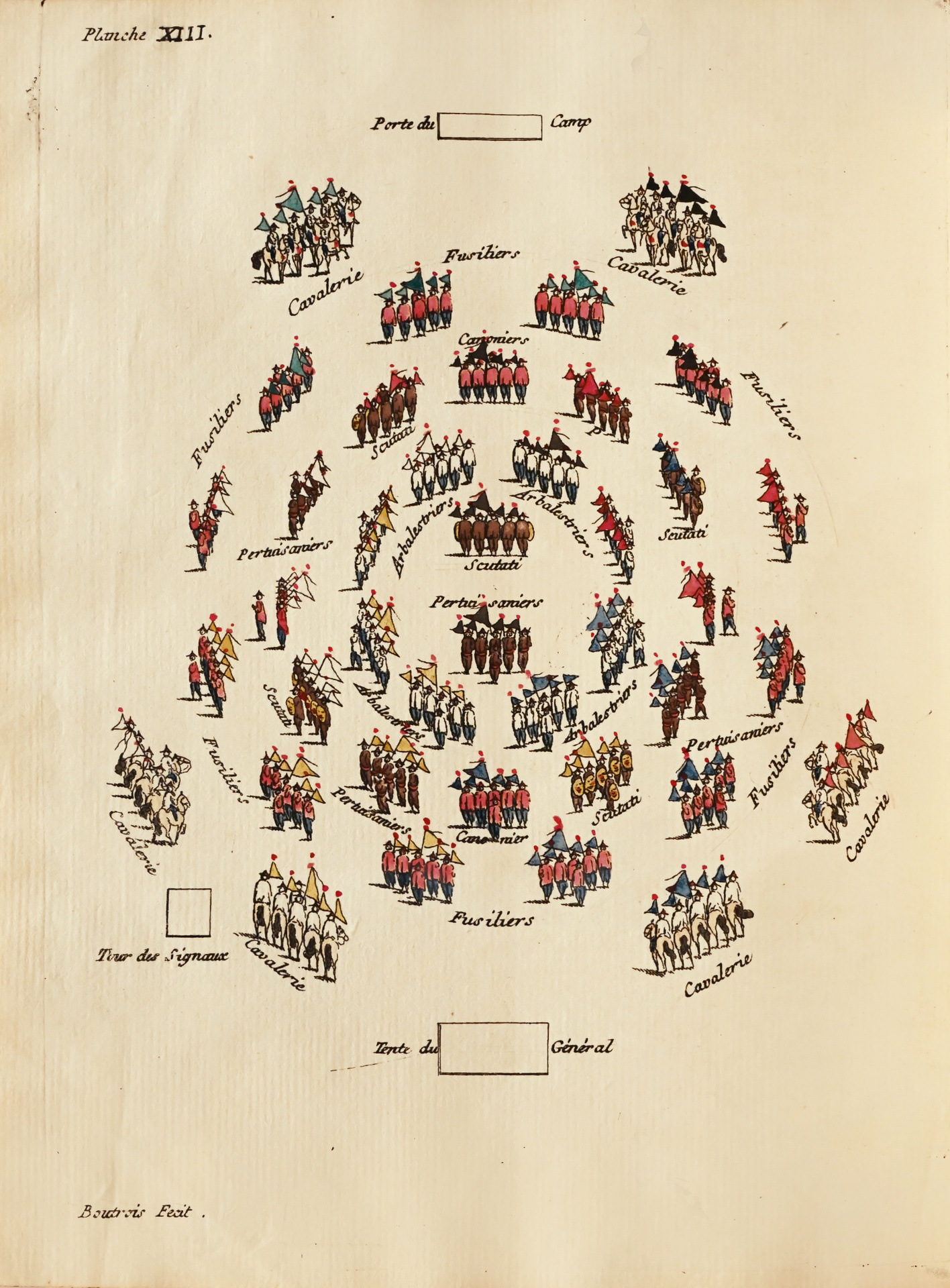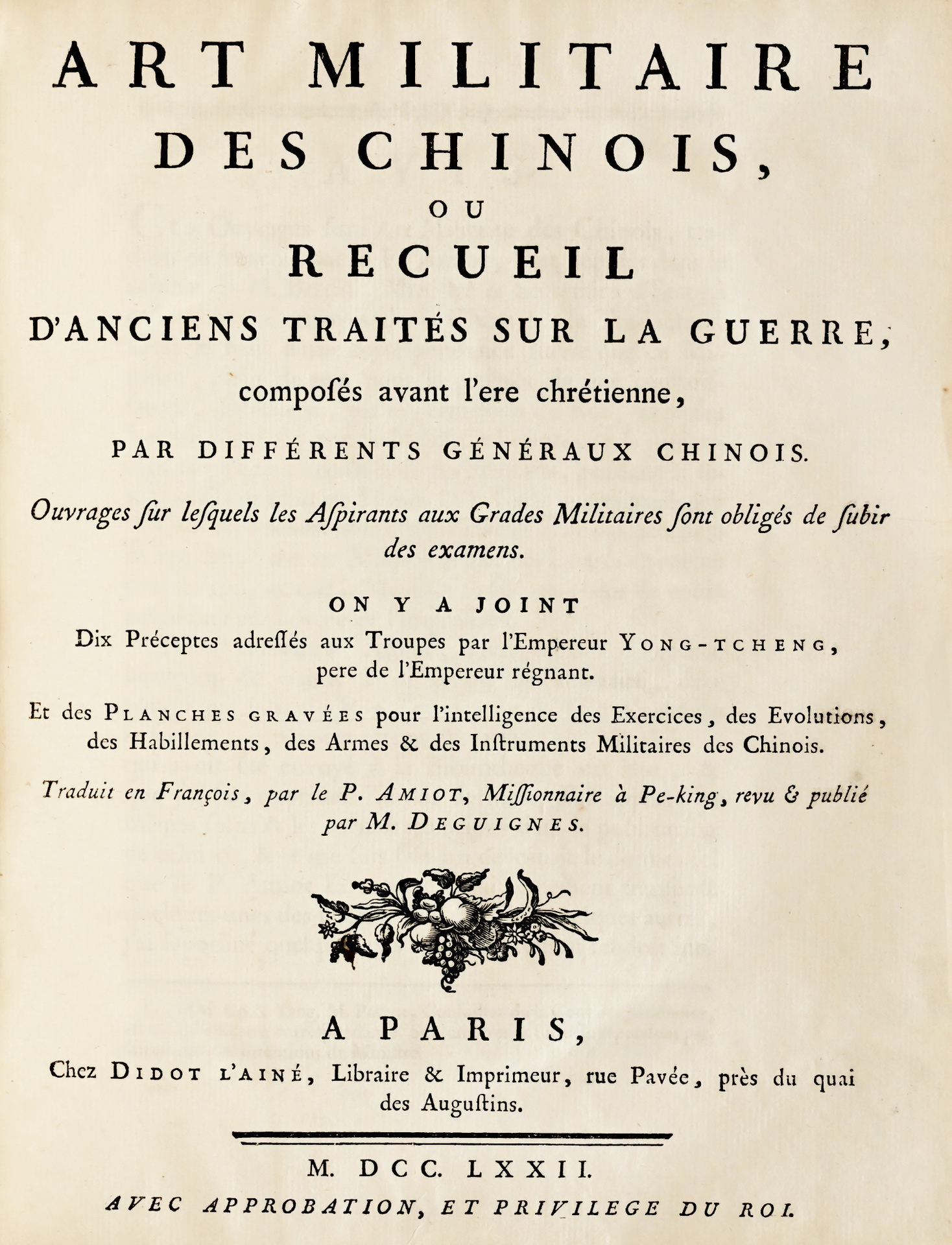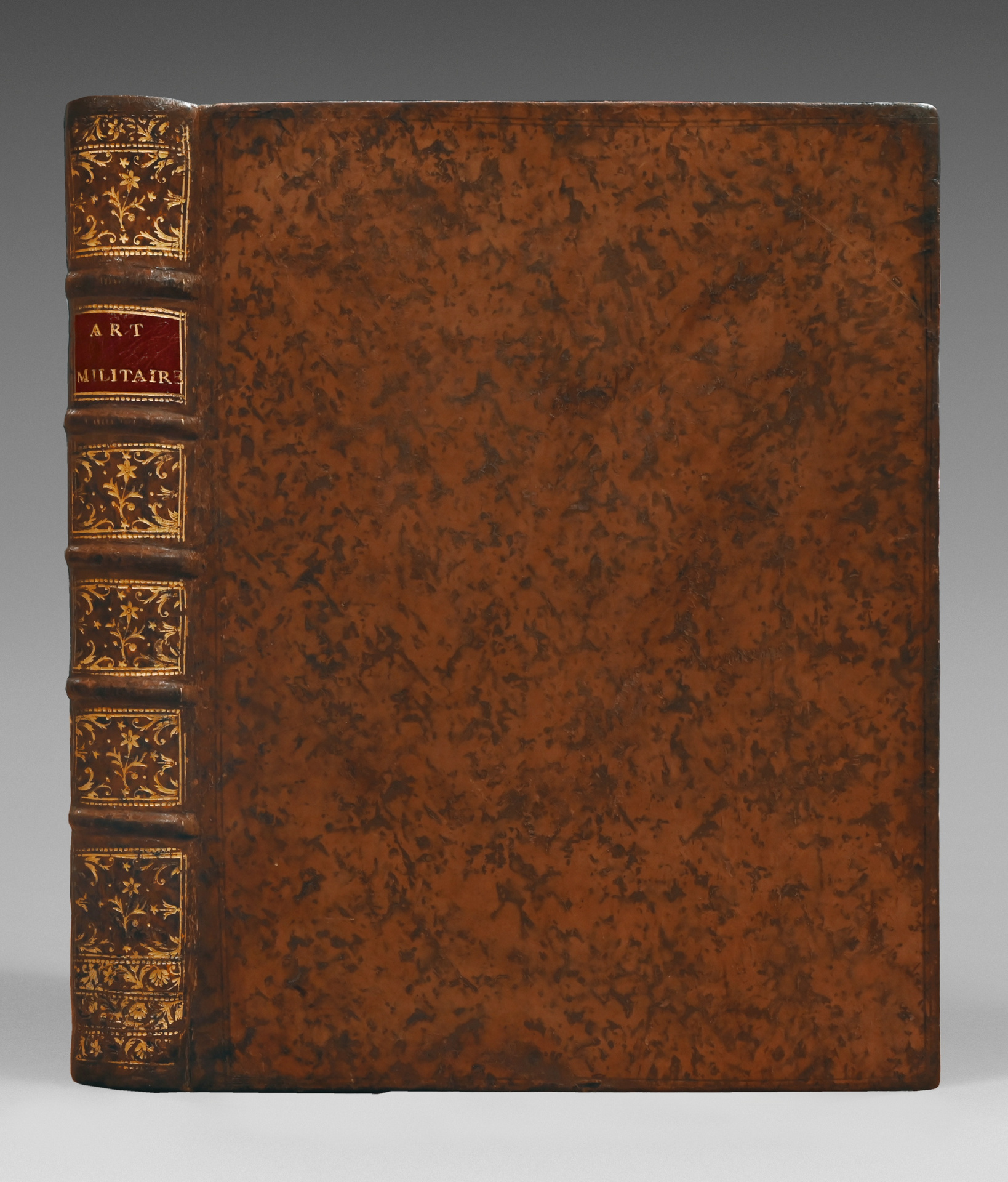Paris, Didot l’ainé, 1772.
4to [255 x 200 mm] of xii pp., 397 pp., (2) pp., 33 hand-colored plates numbered from 1 to 12 and from 1 to 21, including 5 folding and 3 with gold or silver highlights. Full light-brown calf, double blind-stamped fillet around the covers, spine ribbed and decorated, red morocco lettering piece, red edges. Contemporary binding.
255 x 200 mm.
First European edition of the famous “Art of War” by the Chinese strategist Sun Tzu (544-496 B.B.).
Löwendahl 560 ; Brunet, VI, 8572 ; Sloos, Warfare 3131.
This French translation was made by Father Joseph Amiot (1718-1793), a Jesuit missionary living in Beijing.
This is “a work of wide-ranging influence on both Eastern and Western culture, it has been accepted as a definitive work on strategy, military or otherwise”.
The translator, Jean-Joseph-Marie Amiot (1718–1793), was a Jesuit missionary in Beijing, who did much to introduce the west to far-eastern life and thought. His introduction of The Art of War to a European readership was ground-breaking.
“Amiot, a Jesuit, reached Beijing in August 1751 and stayed there until his death in 1794. Over more than forty years studying China’s culture Amiot became largely responsible for much of what the West came to know about China.
Sun Tzu’s ‘Art of War’ is one of the most influential works written on the strategy and tactics of warfare. Sun Tzu (544-496 B.B.) was a Chinese military strategist, revered throughout Asia but virtually unknown in Western culture until Amiot’s translation. In this classic work he treats of management, environment, leadership and creativity, among other topics. Amiot was an important conduit for Western knowledge of the Chinese culture. In addition to the Art of War, he was translator for and confident of the Qianlong Emperor, wrote a biography of Confucius, an authoritative Manchu dictionary and other works of history, science, music and art”.
The work would not be fully translated into English until 1910.
The Art of War (孙子兵法 ; pinyin : Sūn Zǐ bīngfǎ) is a short Chinese treatise of military strategy. Attributed to the strategist Sun Z i(孙子 ; pinyin : Sūn Zǐ), the text is composed of 13 chapters dedicated to the analysis of the various dimensions of the war: based on an indirect strategy, made of economy, cunning, knowledge of the adversary, psychological action…
The first of the Chinese military Classics, whose fame probably comes from its date of composition, The Art of War is the main element of a rich corpus of strategic thinking compiled in 1078, at the instigation of the Emperor Shenzong from the Song dynasty, under the title of the Seven Classics of military art.
The Art of War exerted a considerable influence over Chinese and Japanese military traditions, and it is still taught nowadays in China, Taiwan and among all military schools of the Chinese world; it constitutes the founding of the contemporary strategic thinking in Asia.
The work was translated in 1772 by the French Jesuit Father Joseph-Marie Amiot and was very successful.
The translation into English by Lionel Giles in 1910, and then the victory of Mao Zedong in 1949, brought back into focus this military strategy booklet.
The Art of War became a canon of Western strategic thinking, in turn profoundly influenced by this treatise that analyses, with a huge advance, the war as a matter of crucial importance for the states.
It is illustrated with 33 plates drawn and engraved mainly by Philibert Boutrois of which 5 folded. They depict battle formations, armours, arches, swords, banners, military exercises…
Precious copy of which the 33 plates were finely illuminated at the time, some with gold or silver highlights.
Very fresh and attractive copy with very vivid colors preserved in its elegant contemporary binding.
A fac simile of the work was printed by the French national Library in 2012.
